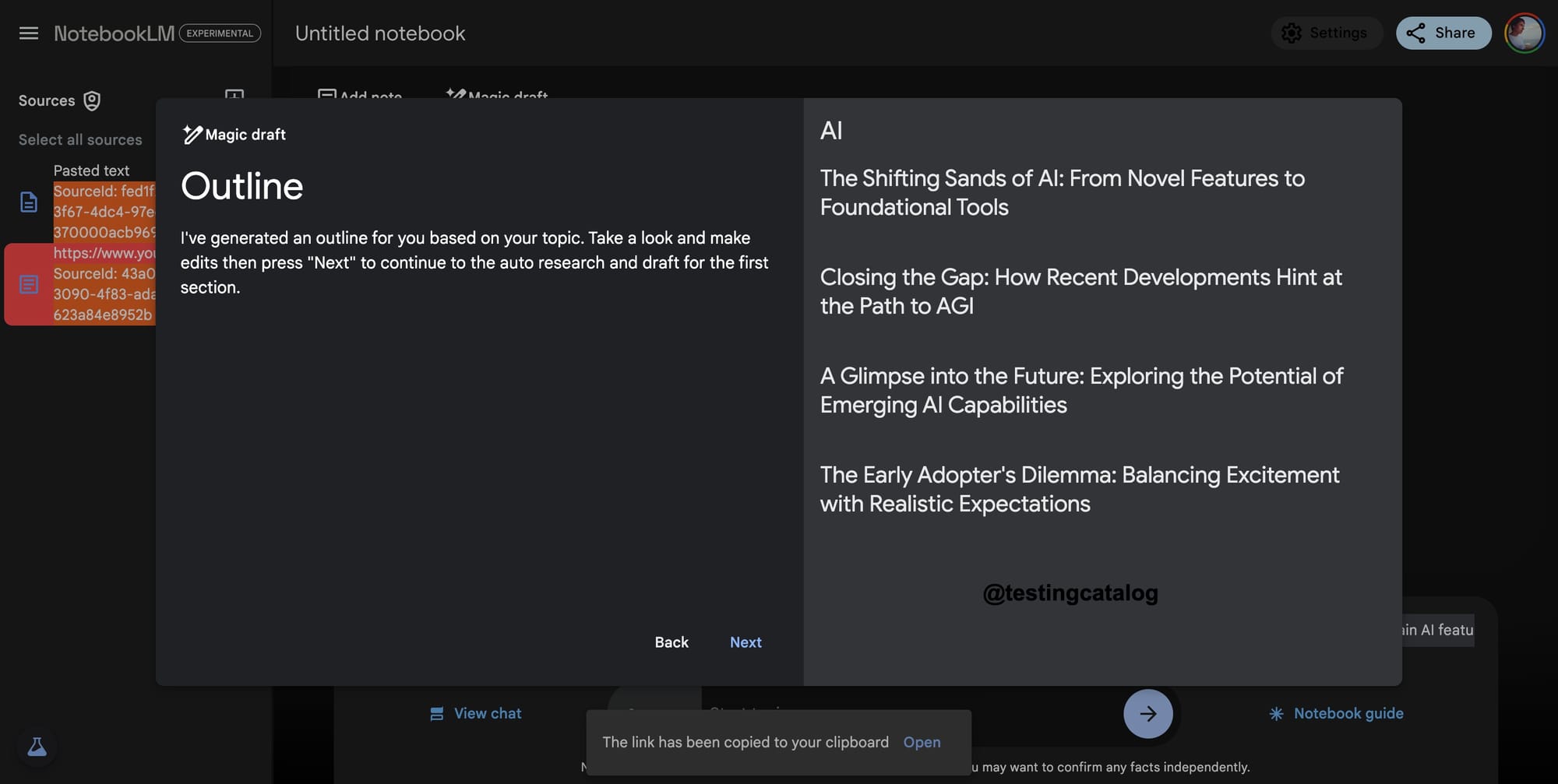Recently, the NotebookLM experiment has introduced several updates and features, with even more hidden ones still in development. One of the latest updates revealed that NotebookLM can now accept YouTube videos as sources and allows sharing audio overviews through public links. However, the most significant feature still in progress is called Magic Draft. This feature enables users to select a sample topic and walk through a step-by-step interface to craft a well-researched draft grounded in relevant sources.

In this new user interface, the process begins with defining a topic, followed by a series of questions generated by the Gemini model. Once the user provides answers, the system suggests an outline based on the input. The following steps guide the user through different iterations of content creation, which are divided into sections, with the overall context anchored to the chosen topic and the answers provided. All of this is supported by the available sources within the Notebook. Once the draft is complete, it can be saved as a note for future use.

Additionally, some smaller improvements are in development alongside Magic Draft. One such feature will allow users to convert their existing notes into sources. Another will enhance note editing by introducing formatting tools, giving users the ability to change fonts, create lists, and embed elements. This will effectively transform the note editor into a fully functional text editor. The release dates for these features are still unknown.

It’s worth noting that the Magic Draft feature is somewhat reminiscent of Perplexity Pages, where users can provide a topic and certain details for AI-generated articles. However, Magic Draft offers greater flexibility in managing the sources used for content creation, whereas Perplexity Pages rely more heavily on its search capabilities.






